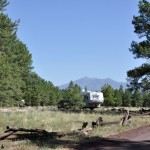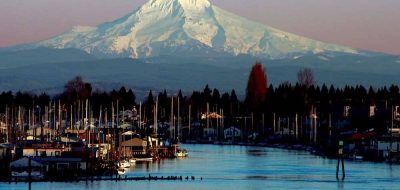 Sightseeing in the South
Sightseeing in the South
Fort Worth/Dallas, TX to Shreveport, LA
By Pam Selbert
The road trip that began in San Diego, California, follows Old U.S. Highway 80 to Yuma, Arizona, on to Dallas and continues to Alabama–but with a difference.
West of Dallas, although it can still be driven on a patchwork of roads bearing other numbers, Old Highway 80 no longer exists. Over the years, beginning in California in the 1960s, the one-time coast-to-coast road was slowly truncated, until finally in 1991 the highway that crossed 21 Texas counties and shared most of its route with three interstates lost its designation as a U.S. highway. The Texas State Department of Highways and Public Transportation hoped this would “lessen drivers confusion.”
The Road Remaining
However, for the 1032 miles that link Dallas and Tybee Island, Georgia, U.S. Highway 80 is still on the map. There’s much of interest along the way, beginning in Dallas Fort Worth just west of Dallas also offers numerous attractions: Fort Worth Museum of Science and History; National Cowgirl Museum and Hall of Fame; Texas Civil War Museum; Texas Trail of Fame; Vintage Flying Museum and Texas Cowboy Hall of Fame, among many others. For a complete listing of Fort Worth attractions, contact the Fort Worth Convention visit fortworth.com.
Outside Dallas, U.S. Highway 80 splits from 1-30 (with which it had shared its route) and cuts a near-straight furrow east toward Louisiana. Running through the flatlands of East Texas, it bisects a string of historic towns, among them Terrell, which was settled in 1848, organized as a town 25 years later, and is now a showplace of early homes, churches and other buildings. Displays at Terrell Heritage Museum in a 1904 former Carnegie Library tell the town’s story in dozens of historic artifacts.
At Edgewood, Heritage Park Museum, made up of two dozen furnished historic buildings-19th century cabins, a blacksmith shop, country store, schoolhouse and museum of pioneer artifacts-chronicles the town’s early years. Ahead is Grand Saline, population 3000, which began with a primitive salt works established in 1845 that now is one of the largest salt plants in the country. The salt dome under the city-1.5 miles across and 16,000 feet thick–could supply the world’s salt needs for the next 20,000 years. Grand Saline Museum/Salt Palace displays mine memorabilia and photos.
Continue through railroad towns Mineola, considered the gateway to the pine country of East Texas, and home to a fine Railroad Museum; Big Sandy, originally settled on Mexican land grants in 1835; and Longview, named for the dramatic vista from atop Rock Hill. Gregg County Historical Museum exhibits depict Longview’s history. Also of interest in the town are the Museum of Fine Arts, and Robert Gilmore LeTourneau Museum, which displays this prolific inventor’s patents (nearly 300), artifacts and early earth-moving equipment, which played a major role in World War II.
Marshall, settled in 1839, has been the Harrison County seat since 1842. In 1861, when Texas seceded from the Union, Marshall was one of the largest and wealthiest towns in the state. After the fall of Vicksburg in 1863, Marshall became the seat of civil authority west of the Mississippi, war-time capital of Missouri, and headquarters of the Trans-Mississippi Postal Department. Today Marshall’s attractions include Harrison County Historical Museum, Marshall Depot and Museum, Marshall Pottery and Museum, Michelson Art Museum, and Starr Family Home State Historic Site, a complex of fine buildings representing 150 years of the history of one of Texas’ most prominent political families.
Cajun Country
Ahead at the blue sign that reads “Bienvenue en Louisiane” (Welcome to Louisiana), Highway 80 crosses into Louisiana and almost immediately, Shreveport. This town of about 200,000, named for inventor-steamboat captain Henry Miller Shreve, was incorporated in 1839 and soon became a center of steamboat commerce. Later, as a Confederate stronghold during the Civil War, Shreveport served as the capital of Louisiana. Nearly a century later, Shreveport’s Louisiana Hayride, a live radio program broadcast from 1948 to 1960 from the Municipal Auditorium, spawned the careers of some of the biggest names in American music, most notably Elvis Presley.
Today photos, recordings and memorabilia at the auditorium’s Stage of Stars and Legends Museum, recount stories of the show’s glory days when Elvis, Hank Williams, Sr., Johnny Cash and others performed there. For more information visit municipalauditorium.homestead.com.
Also of interest in Shreveport is 92,000-square foot Sci- Port Discovery Center with hundreds of hands-on exhibits, science shows, and eight interactive areas, including a laser planetarium. There’s also a gift shop and cafe, plus the state’s only IMAX dome theater.
Bossier City, Shreveport’s sister city across the Red River, has its own set of attractions: Louisiana Boardwalk, a 550,000-square foot shopping/dining/entertainment complex; riverboat casinos; Ark-la-Tex Mardi Gras Museum, with a large collection of Mardi Gras costumes; and the Eighth Air Force Museum on Barksdale Air Force Base, where visitors can learn about military history and aviation. For more information about local attractions visit shreveport-bossier.org.
Continue east to Minden, seat of Webster Parish, settled around 1818. The town has preserved its historic downtown with original brick streets and buildings that now house antiques shops and restaurants. The nearby historic residential district features more than 70 fine homes, many on the National Register of Historic Places.
Arcadia in Bienville Parish, the next town on the route, claims to be a “shopper’s paradise, with antiques stores on every corner.” “Bonnie and Clyde Trade Days” -named for the infamous outlaws Bonnie Parker and Clyde Barrow, who met their end just south of town, shot by local lawmen-is held the weekend preceding the third Monday of each month. More than 400 vendors from around the country offer their wares; there’s also an RV park.
At Ruston, in Lincoln Parish, an 18-block historic district offers interesting shopping, dining and art (at Piney Hills Art Gallery). Also in town are the Louisiana Military Museum, with displays of military artifacts from the past 200 years; the Idea Place and Planetarium (on the campus of Louisiana Tech University); Lincoln Parish Park with a fine walking trail and bike trail; and on the fourth weekend in June, an annual event for nearly 60 years, the Squire Creek Louisiana Peach Festival.
Ahead in Ouachita Parish, Monroe-West Monroe, with a combined population of about 65,000, offer more than 70 restaurants, many featuring Cajun cuisine (don’t leave Louisiana without sampling some of the spicy dishes). Also in town are Pecanland Mall, the largest shopping mall in North Louisiana; Antique Alley; Biedenharn Museum and Gardens Ooseph Biedenharn was the first bottler of Coca-Cola); and Black Bayou Lake National Wildlife Refuge for bird- and other wildlife-watching.
The last stop in Louisiana is Tallulah, seat of Madison Parish, founded in 1853. The parish, noted for the cotton, soybeans, corn, rice and wheat grown here, was first to use crop duster airplanes to eradicate boll weevils. The operation was the beginning of Delta Airlines located at Scott Field, oldest general aviation airport in the state.
Civil War History
West of the Vicksburg Bridge over the Mississippi River, Highway 80 joins 1-20 and runs concurrently with the interstate for about four miles and from then on roughly parallels it. The first stop in Mississippi is lovely Vicksburg, the “Red Carpet City of the South,” which was incorporated in 1825, and named for Newitt Vick, a Methodist minister and conscientious objector of the Revolution. During the Civil War, following the fall of Vicksburg in July 1863 after a 47-day siege, which had successfully starved the city into submission, the Union gained control of the Mississippi River. The simultaneous defeat of General Robert E. Lee at Gettysburg marked the turning point of the war, though it would continue for nearly two more years.
Guides at the Old Courthouse Museum here point out that Confederate Generaljohn Pemberton, surmising he could get better terms by surrendering Vicksburg on July 4th did so. He had his troops stack their arms to allow General Ulysses Grant and his Union troops into the city-and was scorned for decades afterwards. Vicksburg didn’t celebrate the holiday again until World War II.
Besides the Old Courthouse Museum the town has many other attractions: Vicksburg National Military Park, Biedenharn Museum of Coca-Cola, Yesterday’s Children Antique Doll and Toy Museum, U.S.S. Cairo Museum, Vicksburg Battlefield Museum, and a host of fine antebellum homes, including the Martha Vick House, McCraven Tour Home and Cedar Grove Mansion. For more information about Vicksburg, visit the Convention & Visitors Bureau website visitvicksburg.com.
Proceed east on Old Highway 80, and west of Edwards you’ll pass Warriors Trail, where a short drive south takes you to the site of the May 1863 Battle of the Big Black River Bridge, a defeat for the South and the last battle before the siege of Vicksburg. Cross the Big Black River and continue east to state capital Jackson, pop. 175,000. Originally called Parkerville, then LeFleur’s Bluff for early settler French-Canadian trader Louis LeFleur, the town was renamed for seventh President Andrew Jackson and was authorized as the seat of Mississippi government by the General Assembly in 1821.
During the war, Union forces captured, burned and looted this strategic manufacturing center. Thus few antebellum structures remain, although two important ones do: the 1842 Governor’s Mansion, which General Sherman used as headquarters (it’s now a National Historic Landmark), and the Greek-Revival Old Capitol, home of the Mississippi state legislature from 1839 until1903; here the ordinance of secession was passed January 9, 1861. Now the Old Capitol Museum, it’s also a National Historic Landmark.
Jackson’s other attractions include a Civil Rights Driving Tour, Mississippi Museum of Natural Science, Russell C. Davis Planetarium/Ronald E. McNair Space Theater, Jackson Zoological Park and Mynelle Gardens. For more information about Jackson contact the Convention & Visitors Bureau see visitjackson.com.
Old Highway 80 continues east through Pelahatchie, Morton, 178,542-acre Bienville National Forest (one of six national forests in the state), towns of Forest, Newton, Hickory and Chunky to “Queen City” Meridian, the last major Mississippi town on this drive. Established in 1860 at the intersection of the Mobile and Ohio Railroad and Southern Railway of Mississippi, the town would soon be burned to the ground by General Sherman during the Battle of Meridian.
But after the Civil War, Meridian was rebuilt and entered a “golden age.” From about 1890 to 1930 it was a leading manufacturing center in the South and the largest city in Mississippi (today with a population of about 40,000, Meridian is the state’s sixth largest). During those “golden” years, many of the sites in the city’s nine registered historic districts were built.
Other attractions include the Meridian Museum of Art; Bamboo Emu Farm; Depot District; Highland Park Dentzel Carousel (a National Historic Landmark); Mississippi Industrial Heritage Museum, and Oak Grove Cemetery, where Jimmie Rodgers, the “Father of Country Music,” is buried. For more information about Meridian, contact Lauderdale County Tourism see visitmeridian.com.
From here on east for a dozen miles, U.S. Highways 80 and 11 and Mississippi Highway 7 run together, closely paralleling the interstate, passing through the interestingly-named town of Toomsuba then tiny Kewanee before crossing into Alabama. At Exit 1 near Cuba, the old road heads due east, parting abruptly from 1-20, which veers sharply northeast. Across Alabama, the road still goes by its original name, the “Dixie Overland Highway”, although you’ll also see signs for U.S. 80. That’s where we will resume our cross-country trek next time.





